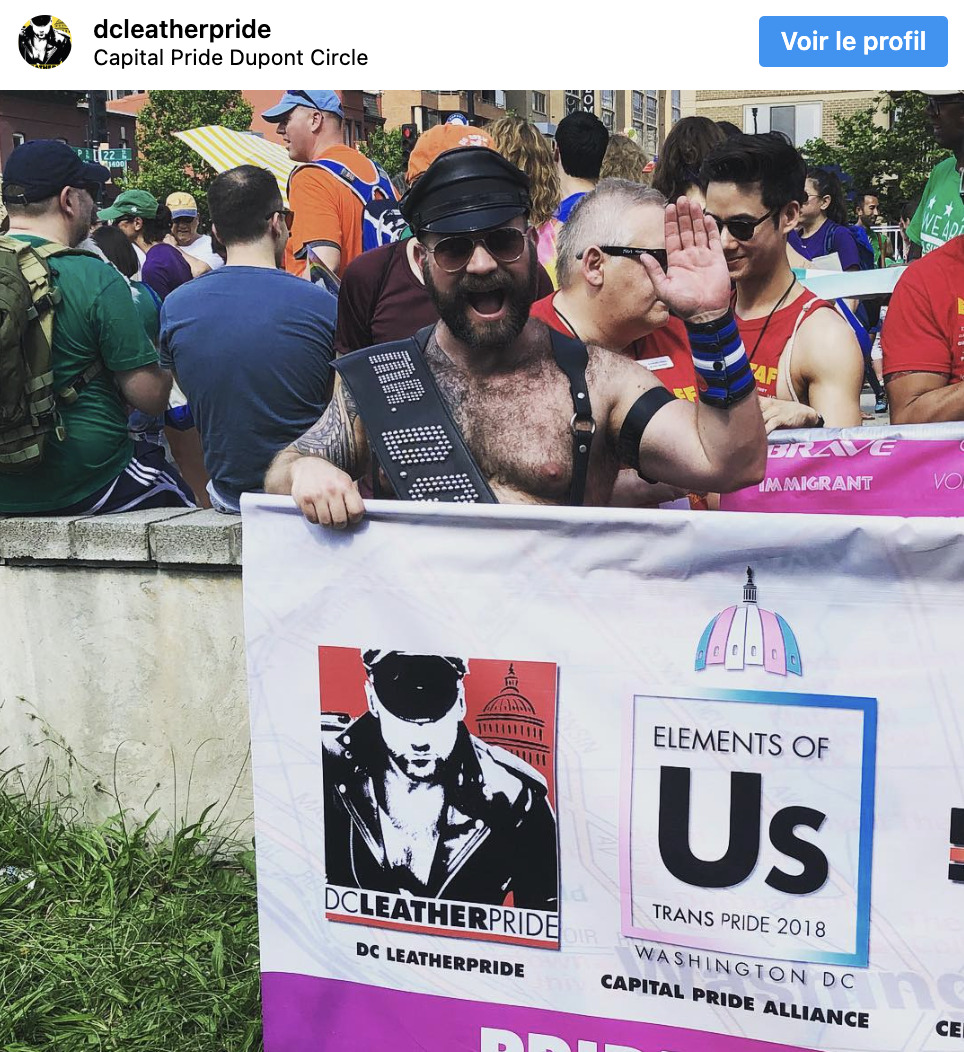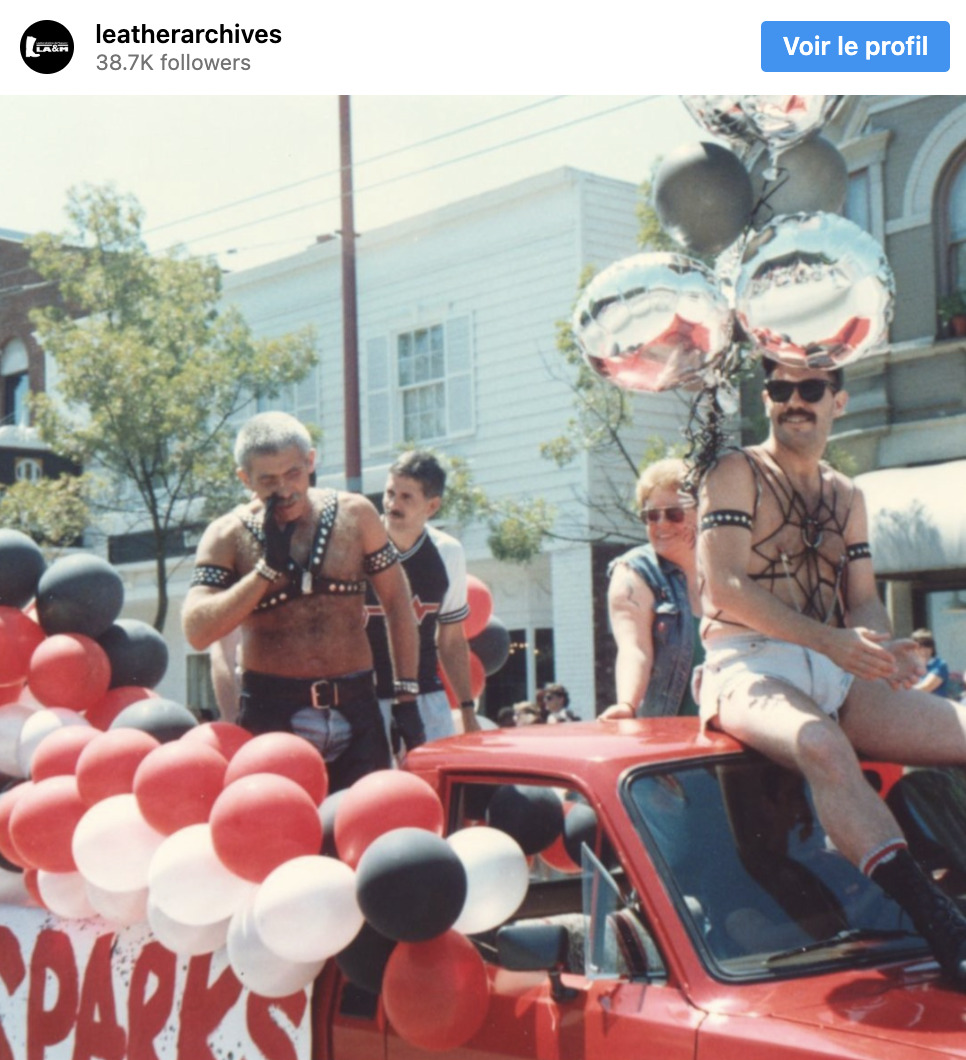It’s a sea serpent, one of those bone of contention that crops up year after year as the June Pride marches approach. It was first across the Atlantic that it appeared on my Twitter timeline, before being picked up in France and dropped like a stone in a pond: should the kinks and fetish parade at the pride this year?
Now, what are we talking about?
Under the word fetish we find a multitude of sexualities, preferences, desires, practices: fans of leather, latex, uniforms, role-playing games (such as playing with puppies or ponies), BDSM…
They are codes, aesthetics, cultures, clothes and accessories. They are places, clubs, but also major events, such as the Folsom Street Fair in San Francisco and its European version in Berlin.

For some people, the presence of these fetish communities at Pride marches would be questionable.
Denis, president of Mecs En Caoutchouc (MEC), association for latex and rubber boot fetishistsadmits that he was very surprised by the debate that took place for several days on social networks: “Twenty years have passed That fetishes parade among everyone, it’s never been a problem, it’s a bit strange. »
So, what is the problem ?
Fear of bad image
In the collective imagination, when one thinks of the fetish community, one mainly thinks of gay, white and cisgender men in leather — particularly because in terms of visibility they have often found themselves embodying media pride, recalls Laurent, treasurer of l’ ASMF, one of the leading gay leather fetish associations:
“In the Pride marches a few years ago, what was filmed ? On TV we’ve seen drag queens, guys in leather, we’ve seen stuff like that, it’s sold more to the press. »
An extravagant, extreme, subversive visibility… and a double-edged sword, as the kit of the LGBTI Journalists Association recalls, in the chapter dedicated to the invisibility of lesbians:
“Many media choose to illustrate the Pride March (ex-Gay Pride) with images of people with heavy make-up (usually men), dressed in exotic clothes or almost naked… Why not, it’s joyful, colorful ect it’s one of the facets of the LGBT community, but we try to be careful with varying representations. »
If the presence of the fetish in the Prides is questioned, even strongly contested, Laurent of the ASMF sees in it a desire to “total normality” ascending that comes to cancel “the sexual side or the fetish game” : “We should blend in with the crowd under the pretext that we have to stand up for LGBT rights! » Understandably, it would be impossible to do both.
The fear of giving a bad image for the LGBTI+ community, to his claims, is expressed by fetishist detractors. But what is a bad image? “Showing our diversity, is that a bad image? » asks Denis of MEC.
“Do it at home, but not in front of the children”
Beware of children, they shouldn’t be able to see nudity or extreme sexual acts at the pride! This is essentially why some LGBTI+ people have a negative view of the presence of the fetish in the marches.
I’ve been dragging my leggings to Pride for a long time and I’ve never seen anything reprehensible. But if we go that way, sometimes I felt very insecure when I found myself in certain gatherings full of half-naked and drunk men when some football team was winning a match…
Under the pretext that the children are present – LGBTI+ teenagers arriving for the first time, children from same-parent families, or even any minor present as a spectator – should this event be policed and only allow certain people to parade, those who are not too shocking, who will be sufficiently dressed? (Not many people will stay, trust me.)
Many things can be done under the pretext of protecting children, as journalist Rachel Garrat Valcarcel once summed up very well: “The argument of children, of their protection, has however been advanced many times against the advancement of the rights of women and LGBT people. »
It is for “the sake of the children” that we oppose marriage for all, PMA and targeted prevention posters in the public space.
Children always have a good back in public debate. The use of the “children’s” argument is interesting to analyze in the “polemic” on “children’s dreams” at Poitiers. #Row
— Rachel Garrat-Valcarcel (@Ra_GarVal) April 4, 2021
It is surprising today to see it topics with reactionary and homophobic undertones are also taken up within the LGBTI+ communityas if the fetish community is a threat. “When you start talking about fetishism, it’s out of the norm. What will bother some people is that it’s not a traditional scheme,” Dennis says.
To insinuate that the evocation of an alternative sexuality practiced happily and between consenting adults will necessarily disturb children is to insinuate that sex is bad, dangerous, dirty, and morally reprehensible. Instead of covering their eyes, talk to your kids about sexuality (and yes, we know, it’s not easy), and don’t hesitate to tell them that sex can be a great thing and that there are a thousand ways to do it.
Kinks, not legit at Pride?
An argument that sexual fantasies and practices they would not have had their place in the pack as wellas Laurent explains:
“We are told that we are LGBT by nature, we are gay, lesbian, we didn’t choose it, we were born this way. But you are not born leather, you are not born latex, you are not born a puppy, that’s the problem. We are told that we can parade because we are gay or lesbian, bi, trans, all the other letters… but “your sexualities, your deviations”, because it is right that if we are not told so, “we do not see them”. »
This would already be very reductive for the followers of the fetish community. But it also means forgetting a little quickly that these communities have existed for a long time, who actively participated in the struggles. If we still needed to demonstrate the need to broadcast the story of LGBTI+ struggles in our own community, here it is.

“We went on walks, even a lot! »I would like to remind Laurent.
“We made progress being visible forty years ago. Somewhere, we have legitimacy through seniority, through the fact that we structured a community at one time. If you look at the first marches in the USA, in San Francisco, the leather boys, there werethey were a good part of the parade. It was almost the extremes that paraded at the time, we paraded in leather, in drag queens — normal people, a little hidden, didn’t come. »
It is therefore with a somewhat bitter feeling that this debate takes place, as if the path covered over several decades were soon forgotten, as if empathy and open-mindedness in the community were withering away.
. “We fought for our rights”insists Laurent.
“And now we are told: yes, but you fought forty years ago, we have our rights, we are normal people, we get married, we want children, we want the same thing as everyone else And we don’t want you anymore because you no longer represent the future of the community. »
Should pride be respectable?
Since when is Pride supposed to be a respectable event? And respectable in whose eyes? We really want sanitized pride to please straight people ?
“We are not here to please, to be quiet, we are here to disturb!” »recalls Denis. “Stepping is a moment where you can show who you are and it can spark curiosity. »
After all, the animosity encountered on social networks is far from the reactions that he and the members of his association unleash at the pride: “There are more people who will come to us out of curiosity than out of hostility. »
If many of us are still happy with this event, it is because it brings together and compares once a year celebrations of the LGBTI+ community which for some are rarely found in the same space.
Pride brings together, federates and compares young people who still don’t necessarily say who they are and people who have been parading for several decades. People who live in small towns, in the suburbs and others who live in the anonymity of big cities. Militant and deconstructed people on all fronts, and others who have never heard the word “intersectionality”.
And it also brings together people who are well versed in social expectations and norms and others who challenge them by their mere presence.
Pride brings together different but not necessarily contradictory needs: we can campaign have the right to found a familywhich may seem like a completely normative and consensual affirmation, without necessarily thinking that the men in leather and latex, the puppies and their owners, have or no longer have a place in this procession because they would threaten its decorum.

The conclusion of an article by author Simon McNeil seems to me very appropriate to counter this respectability argument:
“The old adage is ‘here we are, we’re queer, used to it’, not ‘here I am, we’re queer, please love us.’ all ages, desexualized, make your own. In the meantime, don’t expect the knots to stop walking. »
So yeah, let’s stay weird, let’s stay queer, let’s stay irreverent, let’s keep getting disapproving stares. The day when pride won’t bother, this may be why you should be concerned.
Do you like our articles? You will love our newsletters! Sign up for free on this page.
More articles about
Rights of LGBTQI+ people
-
“No fetish at Pride”: the eternal debate on leather and latex in LGBTI+ marches
-
Should the French calendar become more feminist, anti-racist and queer?
-
Why Elon Musk wants to ban the word cisgender from Twitter
-
“They thought I would keep quiet”: the deputy mayor of Montreuil testifies to the homophobic ambush suffered
-
Daphne Bürki: “The word son of a bitch is a homophobic slur”
Source: Madmoizelle
Mary Crossley is an author at “The Fashion Vibes”. She is a seasoned journalist who is dedicated to delivering the latest news to her readers. With a keen sense of what’s important, Mary covers a wide range of topics, from politics to lifestyle and everything in between.




